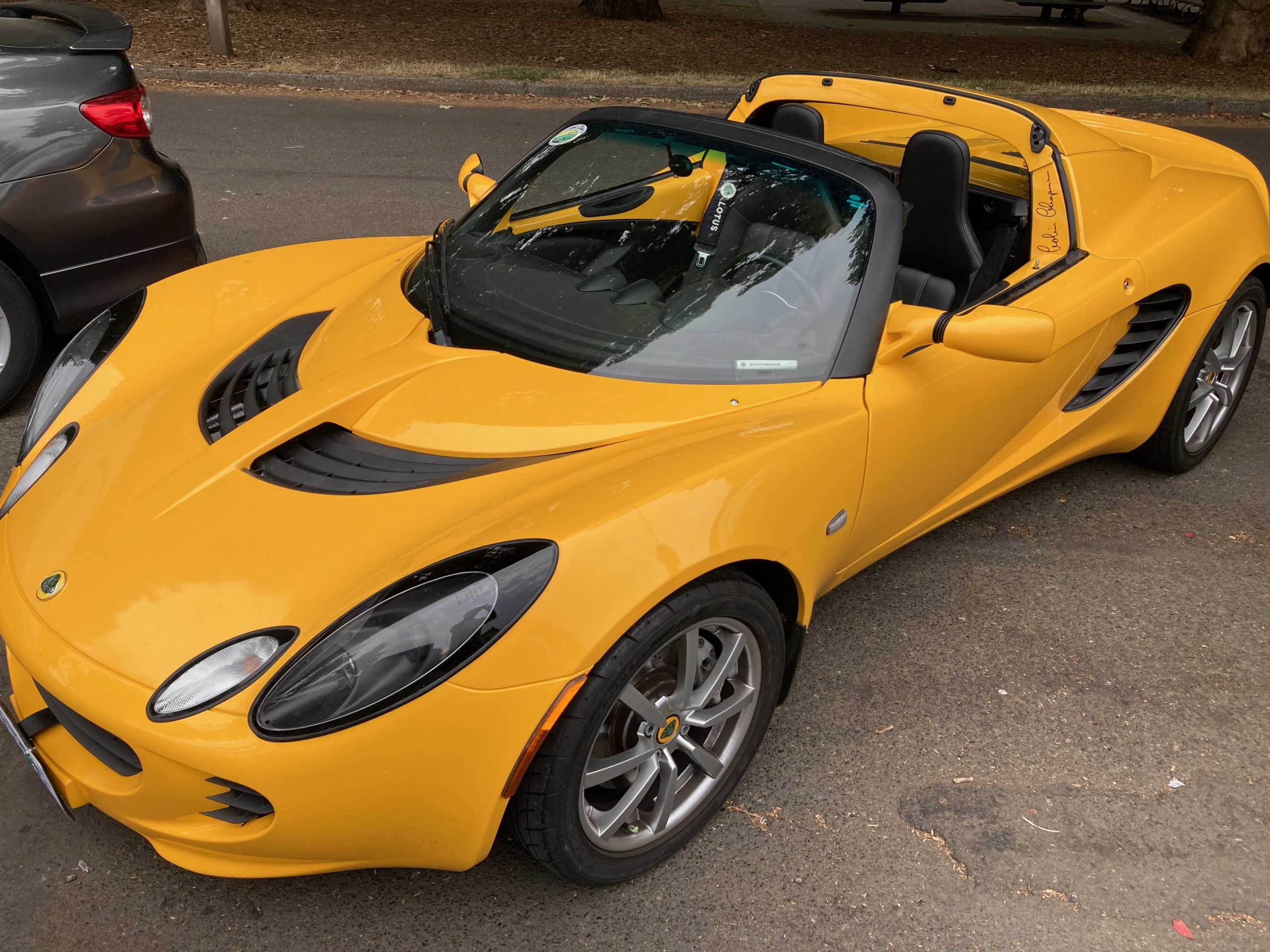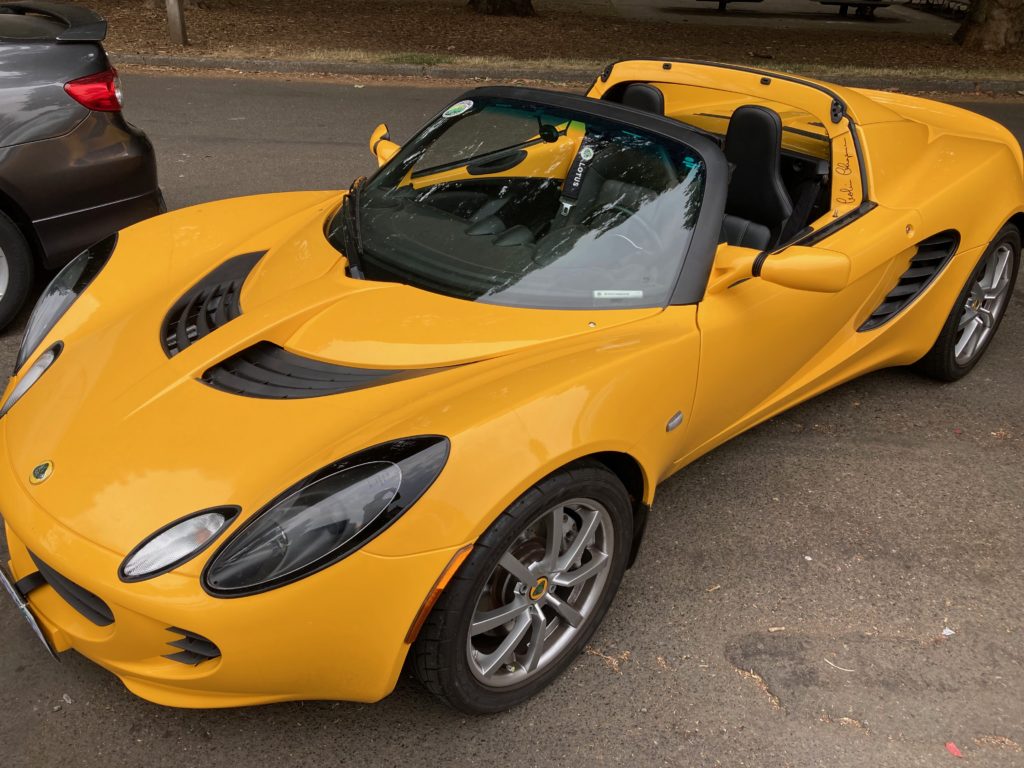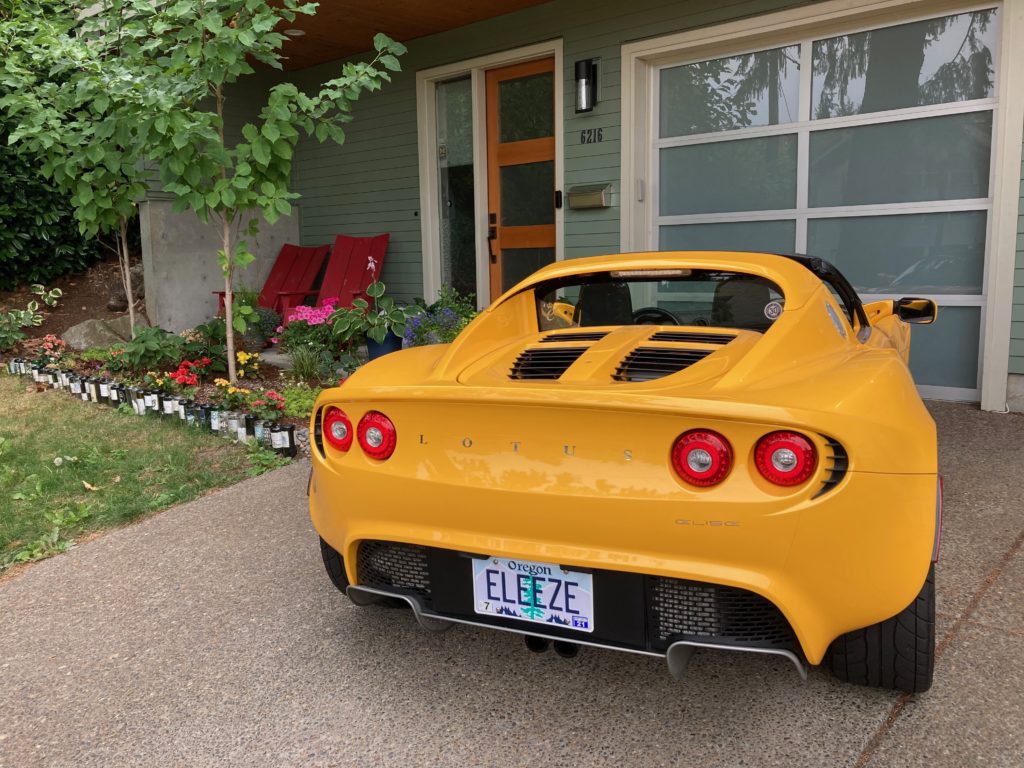
The SCM 2006 Lotus Elise had not seen much action recently. It had been moved about in the storage garage to make more room for other cars and driven short distances, but it had been a few years since it had been truly exercised.
The letter from the State of Oregon reminding us that the car was due for its periodic emissions testing regimen had been cluttering my desk for more than a month. Summer was waning and Oregon’s delightfully wet and chilly fall seemed like it would be coming early this year. Getting the car back in shape was becoming more urgent.
With a mostly free weekend and beautiful weather forecast, I decided to take the car on a run into the Columbia Gorge.
I did not intend to return as the proud owner of a new 2-gallon gas can.
My first few outings in the Elise had been tentative. Tire pressures needed to be set and engine oil and coolant checked. Even before that, I needed to figure out how the engine immobilizer worked.
It’s a modern car – with a Toyota powertrain – so of course, once I learned to press the right unlabeled button on the keyfob, the Lotus fired right up. Having been hooked to a battery tender certainly did not hurt.
At first, I could not locate the removable soft top, despite searching the garage, so my destinations were limited to looping back to the SCM garage (or my own). Having since discovered the ingenious device neatly rolled up in the cargo area behind the engine compartment – right where it belongs – I was ready to actually go somewhere.
My destination was Hood River, OR, an easy hour’s drive from Portland.
With the underlying motivation being to drive through the gasoline of unknown vintage that remained in the Lotus’ tank, I set out without fueling. I kept a steady eye on the digital gas gauge, noting as its monochrome pixels disappeared while I drove.
About 10 miles from Hood River, the fuel light came on.
The Elise was EPA-rated at 27 miles per gallon on the highway, so I thought nothing of cruising the remaining way into town. I parked the car on the street around the corner from a cafe where I bought myself a coffee. My plan was that I would walk around a bit, enjoy my drink and the beautiful weather, and fill the tank with premium afterwards.
And that’s exactly what I did – sort of.
Now, I have done some pretty stupid things with old cars over the years. I once locked the keys in a friend’s vintage Bentley with the engine running. It would have been less of a problem if at the time the car was not blocking the valet lane in a parking garage – with a line of angry Beltway commuters behind me.
Like every gearhead who has messed around with more than a handful of collector cars, I have run out of gas, blown up tires, overheated engines, and survived myriad other experiences in which the machines have behaved in ways that were unexpected.
Curious things happen in old cars, which is why we take precautions and carry fan belts in the trunk.
Although I do recall Publisher Martin suggesting to me years ago, that if I did not bring any tools when I was sent to retrieve the SCM Fiat 2100, the car would not break down. This was not the case.
By most calculations, however, the Elise is not an old car. Which is why, when I parked in downtown Hood River, with the gas gauge showing one remaining line of pixels, I fully expected the engine to restart. This was also not the case.
When I returned to the car after an hour or so, not only did it refuse to start, but the gas gauge now showed empty. Perhaps if I had not parked on a hill…
Luckily, with a container from a nearby station and a splash of fuel my problem was solved.
I stowed the top back in the trunk for my return to Portland, as the gas can certainly wasn’t going to fit. This kept any remaining drops of fuel at the bottom of the can from scenting the interior, as it rode shotgun on the seat beside me.
I haven’t yet taken the car for its emissions test. That adventure will have to wait for another day.


Owned a ’67 Mustang convertible for 25 years. The moment the gas gauge needle touched E, it ran out of gas! Happened 3-4 times before I got wiser.
The only reason to own a Lotus is to drive it. The more frequently, the better!
on the octane magazine rally in france a few years ago, with the fuel needle below e in my ’55 tbird and having to keep up with the flying brits who knew where the gas station was, i determined than when the needle was on the peg there was a half gallon or so left; needle on ‘e’ means almost 1/4 tank remaining–i conducted experiments!
I use my trip odometer as a range indicator. After a number of tanks, you develop a sense of when you should start looking for a place to fuel up, and I’ve never run out of gas. Strangely, the 356 is starting to get better mileage, with no differential in driving technique or tune. Odd, that.